Space technology is becoming a big challenge for the modern world. As the natural resources of the world are reducing every year we need to find a new world where we can settle colonies in case of any disaster on earth. More ever advanced way of communication increase the demand of modern tools and satellites. The curiosity of winding life on the other planets and also increase the demand of modern rockets and satellites.
Space technology is developed by the aerospace industry or the space science for use in satellites, space flight or space exploration. It includes spacecraft, satellites, space stations, and support infrastructure, procedure and equipment. The interest in space exploration incredibly increase the spirit of engineers and scientists. Which bring a great innovation in space technology.
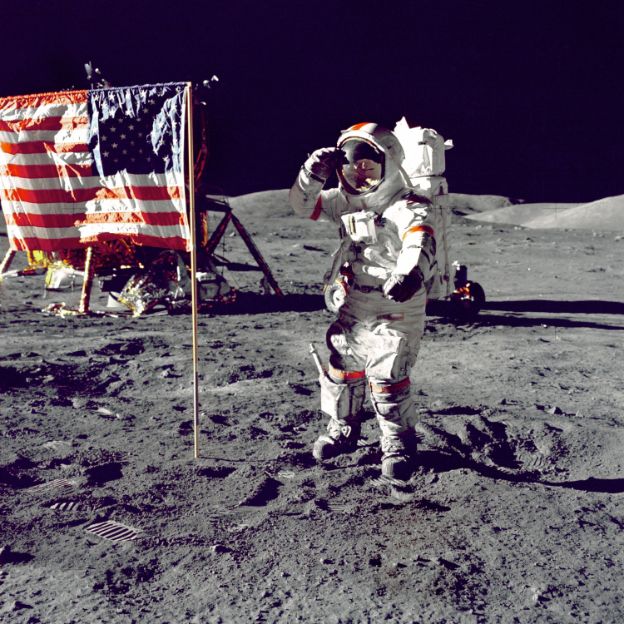
International Space Station
The International Space Station is a $100 billion research settlement in low-Earth orbit. ISS construction began in 1998. The International Space Station is join program of 5 space agencies including NASA, Russia’s Roscosmos agency, the European Space Agency, the Canadian Space Agency and the Japan Aerospace Exploration Agency. The astronaut crews have lived on the ISS continuously since 2000 and Today, the ISS is become the largest human-built structure in space.
ISS consist on two sections, the Russian Orbital Segment (ROS), which is operated by Russia, and the United States Orbital Segment (USOS), which is shared by many nations.As being in the orbit, The Space Station works in a microgravity and space environment research laboratory .The crew members conduct experiments in biology, human biology, physics, astronomy, meteorology, and other area of research. The ISS is suitable for the testing of spacecraft systems. The equipment required for missions to the Moon, Mars and other orbital mission. The Space Station has been visited by many astronauts, cosmonauts and space tourists from 18 different nations.
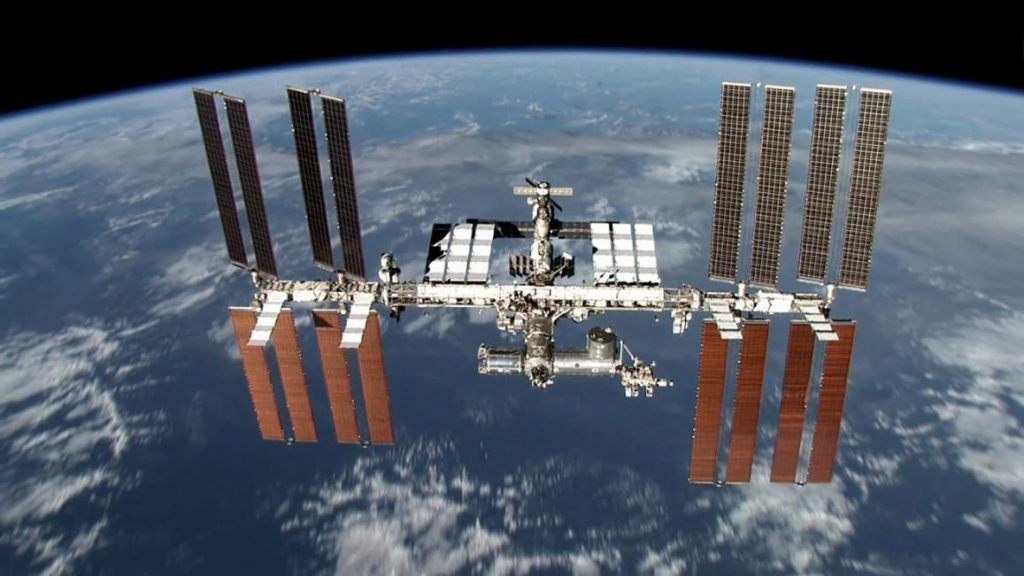
Incredible Space Technology
Hubble telescope
Hubble Telescope is the first and most versatile space telescope. It was launched in 1990 into low earth orbit and still in operation. The Hubble telescope was built by NASA with contribution by European Space Agency. The Hubble Telescope helps a lot in exploring new planets and stars and galaxies. We can now the farthest ends of our galaxy and can calculate the course of multiple asteroids or meteoroids sitting on earth.
Hubble is no doubt a greatest wonder of space technology. It marks the beginning of new era when humans would be able to not only see but travel to the farthest ends of this galaxy and many more galaxies. Going into space now a days is not the challenge but the real challenge is to find new ways and gears to make this journey safe and comfortable as possible.
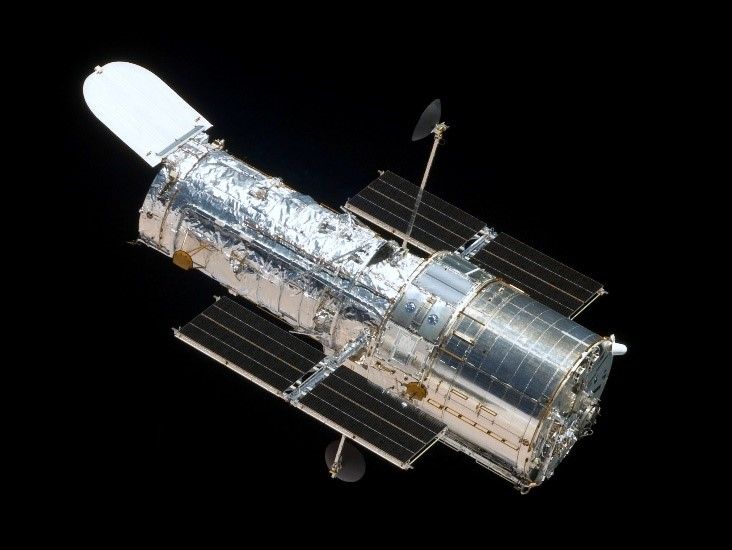
3D Printer in Space
The 3D printer builds a three-dimensional object from a computer-aided design model, usually by successively adding material layer by layers. 3D printer approve space hardware that is built in space; than launched from Earth. In 2014 NASA scientists build a ratchet wrench in ISS from 3D printer by sending transmission from earth.
This is a long lap in the field of science and technology till now hundreds and millions of dollars were spend just to bring such trivial things to the space stations but now the 3D printer is there to solve this issue. Many space industries including SpaceX of Elon Musk and Blue Origins of Jeff Bezos is trying there best to produce such means that will make the space the new home of humanity.
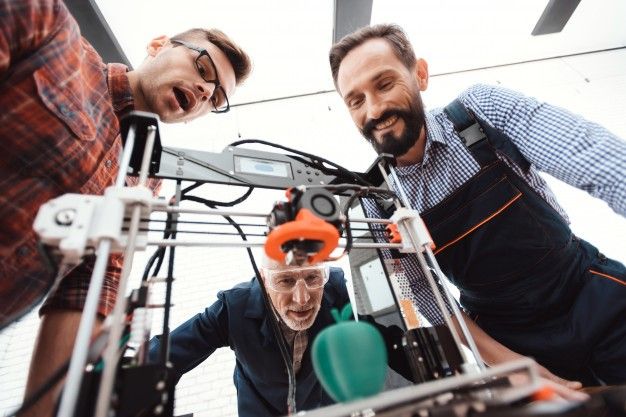
Cassini-Huygens
Cassini was launched into space on October 15, 1997 by Titan IVB/Centaur. Cassini was active in space for nearly 20 years, with 13 years spent orbiting Saturn and studying its planetary system after entering orbit on July 1, 2004. The Cassini–Huygens space mission commonly called Cassini, involved a collaboration between NASA and the European Space Agency (ESA), and the Italian Space Agency (ASI) to send a probe to study the planet Saturn and its system, including its natural satellites and rings.
The Flagship-class robotic spacecraft contained both NASA’s Cassini probe and ESA’s Huygens lander and it landed on Saturn’s largest moon called Titan. Cassini was the fourth space probe to visit Saturn and the first to enter its orbit. The Spacecraft took its names from the astronomers Giovanni Cassini and Christiaan Huygens.
The Huygens land on Saturn largest moon Titan on January 14, 2005. It sent data to Earth for around 90 minutes, using the orbiter as a relay. The Huygens landing was the first landing ever accomplished in the outer Solar System and the first landing on a moon (Titan) other than Earth’s Moon. After completing its mission Cassini finally allowed to enter in Saturn atmosphere and destroyed.
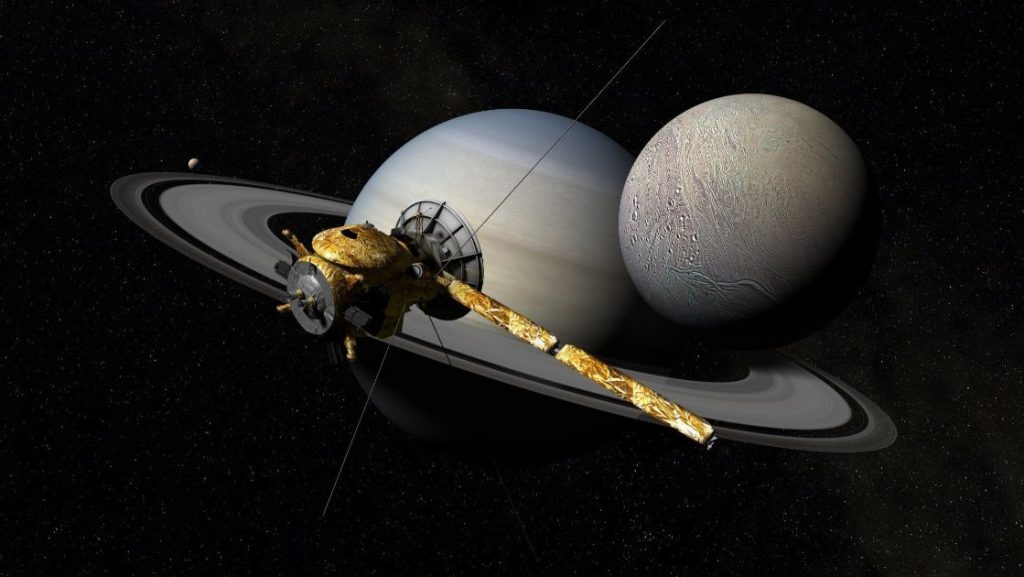
Juno Mission
Juno is NASA space probe built by Lockheed Martin. The probe orbiting the planet Jupiter and investigate its system. The mission was launched from Cape Canaveral Air Force Station on August 5, 2011.It enter in a polar orbit of Jupiter on July 5, 2016. Juno will be intentionally deorbit into Jupiter’s atmosphere, after completing its mission. Its maximum speed is 618 km/h and its orbit height is 4,300 km.
While its speed in orbit is 0.17 km/s. The purpose of this mission is to measure Jupiter’s composition, gravity field, magnetic field, and polar magnetosphere. Moreover it can also search for clues about how the planet formed, including whether it has a rocky core, the amount of water present within the deep atmosphere and mass distribution. Juno is the second spacecraft which orbit Jupiter, after the nuclear Galileo orbiter, which orbited from 1995 to 2003. Just like satellite orbiting earth Juno is also powered by solar arrays.

New Horizons
New Horizons is an interplanetary space probe that was launched from Cape Canaveral Air Force Station by an Atlas V rocket directly into an Earth-and-solar escape trajectory .The spacecraft was launched with primary mission to perform a flyby study of the Pluto system in 2015. So, a secondary mission to fly by and study one or more other Kuiper belt objects (KBOs).
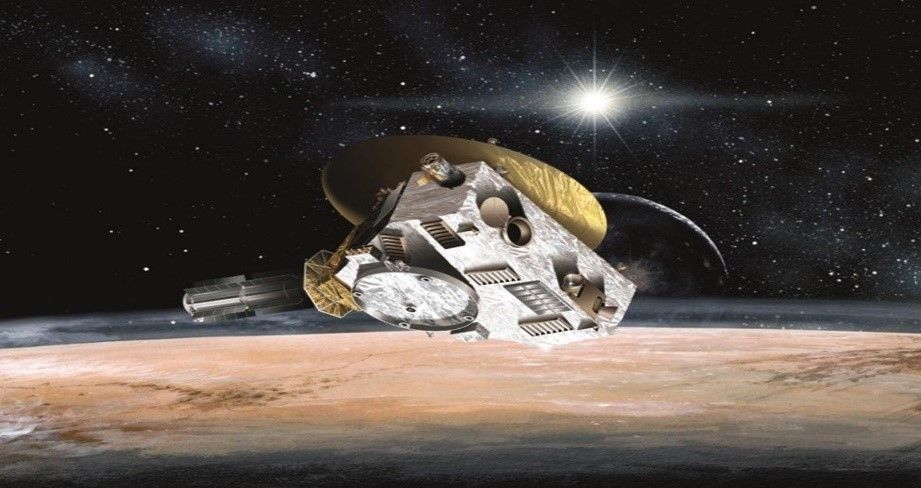
Revolution in Robotics
Curiosity Rover
Curiosity Rover is a part of NASA’s Mars Science Laboratory mission.it is a car-sized rover designed to explore the crater Gale on Mars. It was launched from Cape Canaveral on November 26, 2011 and landed on Aeolis Palus inside Gale on Mars on August 6, 2012. The basic purpose of curiosity Rover is to investigation of the Martian climate and geology; assessment of whether the selected field site inside Gale has ever offered environmental conditions favorable for microbial life, including investigation of the role of water; and planetary habitability studies in preparation for human exploration.
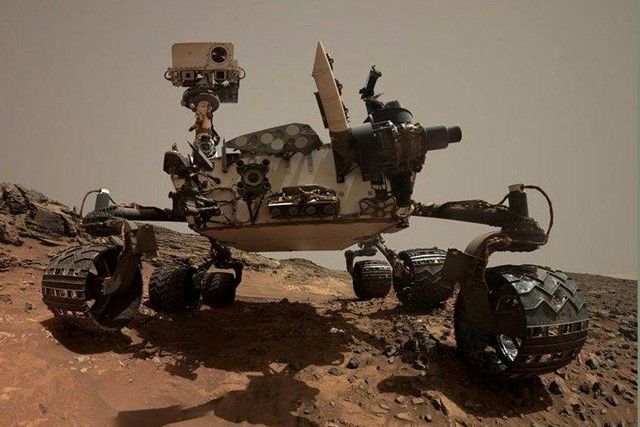
Mars Exploration Rover
Mars Exploration Rover begain in 2003 by the launch of two rovers: MER-A Spirit and MER-B Opportunity—to explore the Martian surface and geology. It’s a NASA’s Mars exploration mission contains two rover Spirit[1] and Opportunity[2] exploring the planet Mars. Both rover landed on Mars at separate locations in January 2004. The mission time of both rovers was 90 Martian solar days.Both rovers holds the record for the longest distance driven by any off-Earth wheeled vehicle. MER-A Spirit was active until March 22, 2010,[3] while MER-B Opportunity was active until June 10, 2018 .
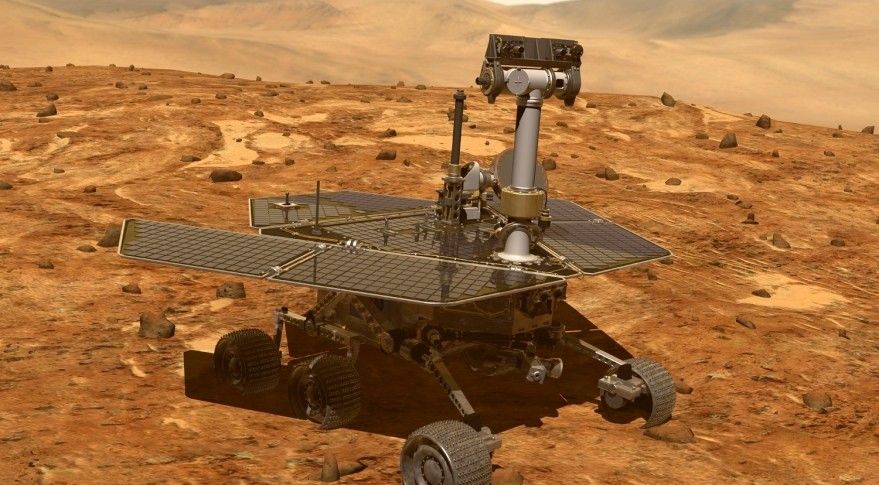
Phoenix Space-Craft
Phoenix land on mars on May 25, 2008. The basic purpose of this spacecraft is to assess the local habitability and to research the history of water there. Its total cost is about US$386 million. It’s a robotic spacecraft on a space exploration mission sent to Mars under the Mars Scout Program. Phoenix was NASA’s sixth successful landing on mars out of seven attempts and was the first successful landing in a Martian polar region. It completed its mission in August 2008 and sent a last brief communication with Earth on November 2 as available solar power dropped with the Martian winter.
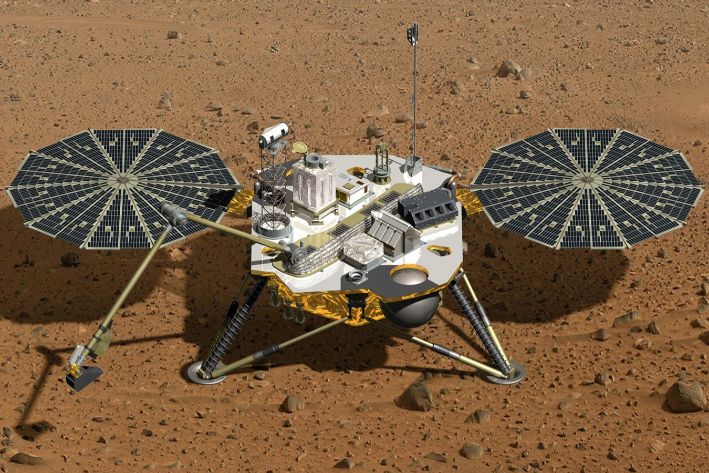
Advanced Space Rockets
To explore the universe in a better way many modifications have been done in space rocket. Engineers are try to design two stage rockets for reliable transportation of satellite. These rockets can decrease the cost of satellite transportation. Space X successfully test Falcon 9 rocket. It can reduce the cost of access to space and enable people to live on other planets. Some of other rockets are,
- Zhuhai-1
- OVS-2
- OHS-1
- Kuaizhou-1
- Xiaoxiang-1
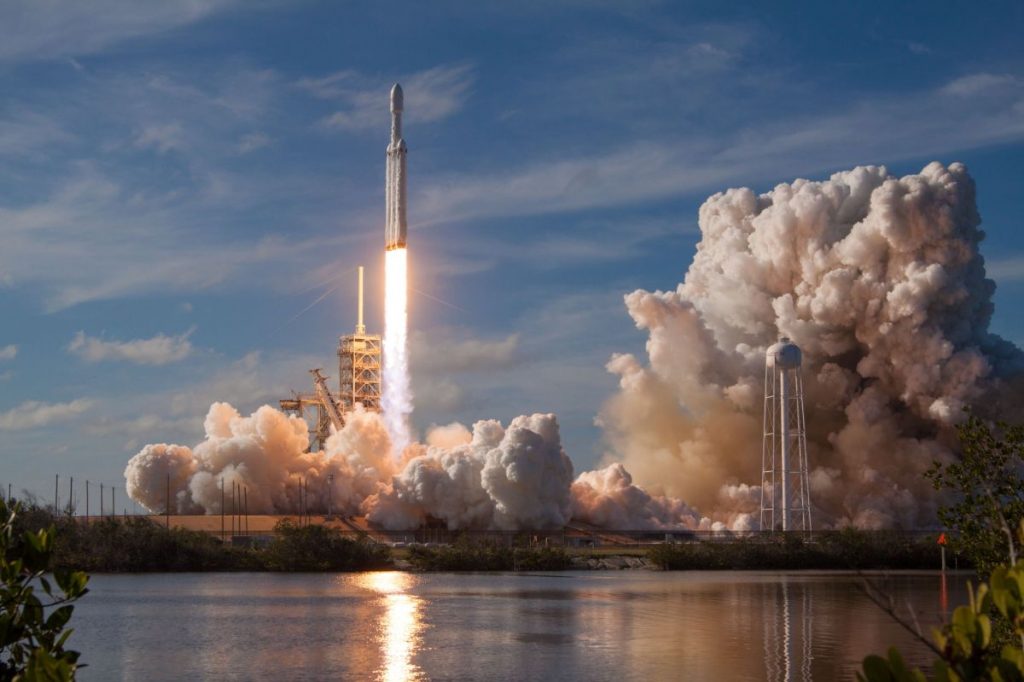
These are one the successful missions in the history of Space Exploration. Many Space Agencies are involving in space race and they tried to beat each other’s. But at this time NASA is ruling over space and maybe in the next days the game of space is going to change.
The Journey of Space begins Now!






















